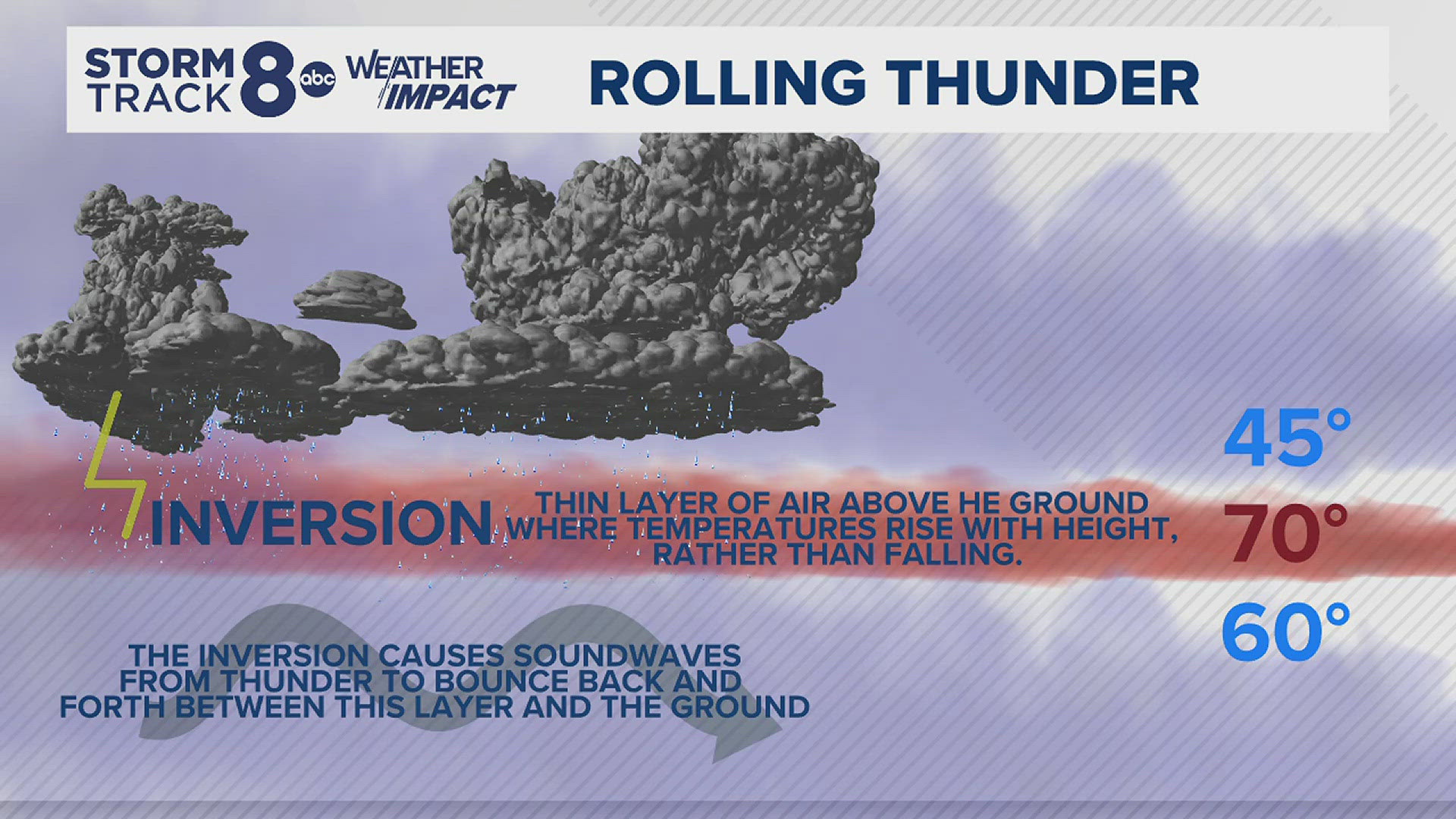MOLINE, Ill. — Thunderstorms can produce different amounts of lightning, depending on the conditions they are developing in. The more water droplets, or hail stones that collide within a storm, the more charged it becomes and the more lightning it will produce. That of course leads to more intense sounding thunder. It isn't the amount of lightning that creates the loudness of the thunder, though. Bambi from Galesburg, Illinois, asks what is behind continuous thunder, otherwise known as rolling thunder. Let's dig in!
The setup
Rolling Thunder isn't anything new. You just need the right conditions to support it. Those conditions include a strong temperature inversion, or, a layer of warm air sandwiched between two layers of cool air. This inversion often occurs at night and early in the morning.


Typically, temperatures fall as you travel from the ground to the atmosphere. However, in this case, as shown above, you can get this temperature inversion to develop. This occurs because the air near the ground often cools faster than the air above it. This creates the inversion that helps trap soundwaves from thunderstorms. These soundwaves then bounce back and forth between the ground and this inversion, traveling far distances and sounding very low in pitch, nearly continuous at times.
With an inversion, these soundwaves can also bounce off terrain, buildings, and other objects that can lengthen the sound.
Have a question that you would like me to answer for an upcoming Ask Andrew segment? Submit it, here!

